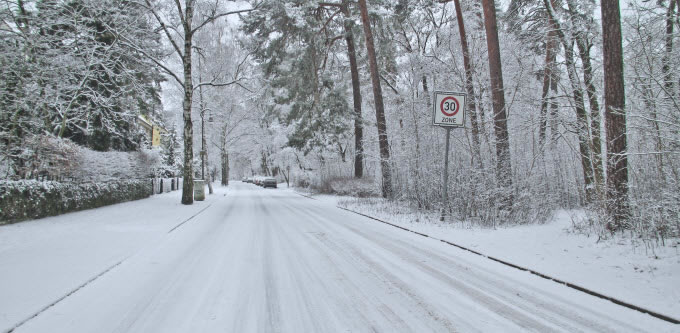Winter Walking Safety Tips
Winter is a beautiful season to get outside and enjoy the fresh crisp air but it comes with the heightened risk of falling. With every surface sheathed in ice or snow, it’s hard to avoid contact no matter how carefully you traverse the sidewalks and parking lots. Winter is a susceptible time for injury and seniors need to be especially diligent to prevent falls on snow and ice. 20-30% of older adults who fall suffer moderate to severe injuries that make it hard to get around or live independently, and increase the risk of early death. This winter, take the necessary precautions to stay healthy and active.
Give yourself permission to take it slow this winter. Understand that you will need to be patient and plan ahead to avoid rushing by leaving an extra half hour for all of your commutes.
Wear winter boots and shoes that provide traction on ice and snow. Choose footwear with soles made from slip-resistant rubber.
Snow Grabbers (non-slip grips with studs) can be added to any outdoor shoes or boots. These provide much better traction over snow and ice than regular soles. They are easy to slip on and off shoes and can be toted around when not in use.
Shorten your stride and shuffle your feet when walking on icy surfaces. Bend your knees gently and keep your feet parted slightly. This will help to keep your weight over your feet as much as possible, and it will improve your center of gravity.
Avoid walking on icy sidewalks; instead walk on the grassy patches alongside the sidewalk for better traction.
Think about reducing the distance you need to walk from the car to the entrance. Park as close to possible to the door and if you are a passenger, get dropped off at the door.
When entering or exiting a vehicle, brace yourself by holding onto something for stability and support.
Cane users should add an ice-grip cane tip with prongs to grip the ground and provide extra stability on slippery surfaces.
Using a walker or rolling walker will provide the stability and confidence to venture out more often in winter, which ideal for people with more severe weakness and balance problems.
Hire a snow removal company to clear and salt your home’s walkways and driveway.
Keep in mind that accidents can happen at home. Develop a system to stay in daily contact with senior friends and neighbours to make sure people are not in life-threatening situations due to falls at home. Unfortunately it’s all too common for people over 65 to develop mild to severe hypothermia after falling and spending the night on the floor during winter.
Reduce the risk of a loved one falling at home by going through the home and eliminating possible risk factors. Confirm that the hallways, stairs and rooms are well lit. Remove clutter, especially from frequently used pathways like the bed to the bathroom. Install non-slip flooring in the kitchen or bathroom where the area can get wet.
There’s nothing like fresh air and exercise and winter shouldn’t be an exception. Remain aware of the dangers of falling, take it slow and wear the proper gear. There’s absolutely no reason why you can’t stay active and safe this winter.
2.Stevens JA, Corso PS, Finkelstein EA, Miller TR. The costs of fatal and nonfatal falls among older adults. Injury Prevention 2006b;12:290–5.
3.Alexander BH, Rivara FP, Wolf ME. The cost and frequency of hospitalization for fall–related injuries in older adults. American Journal of Public Health 1992;82(7):1020–3.




 and get Cash rewards!
and get Cash rewards!